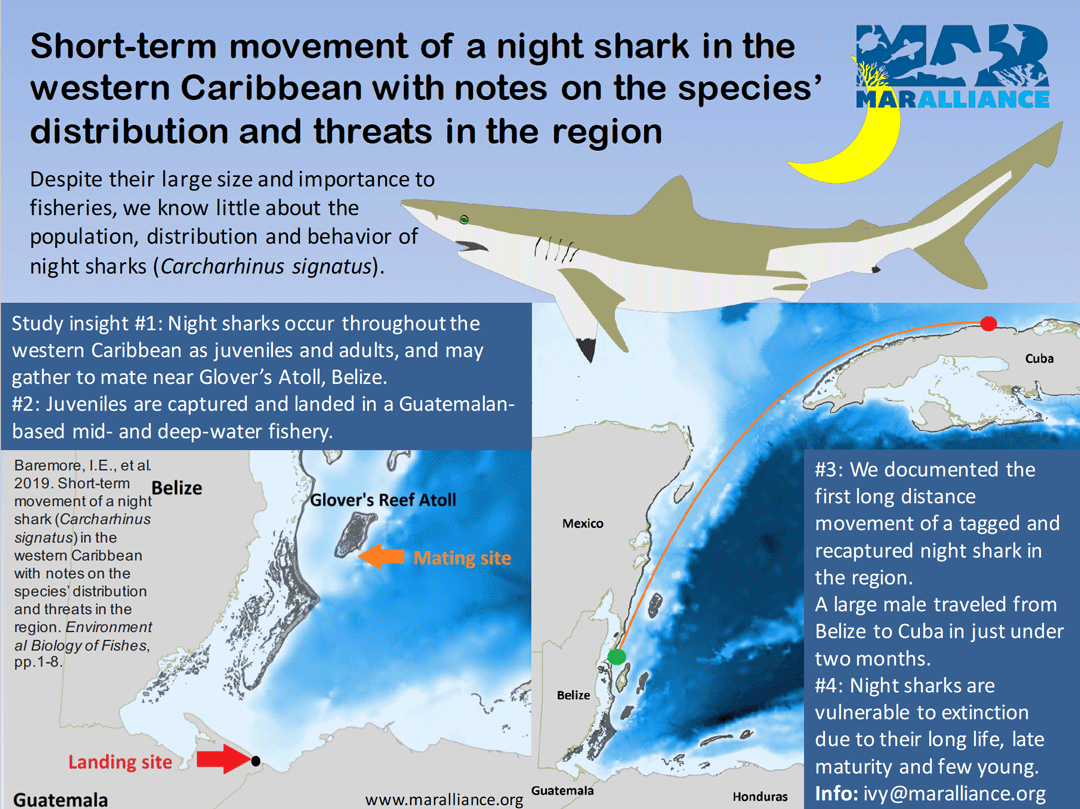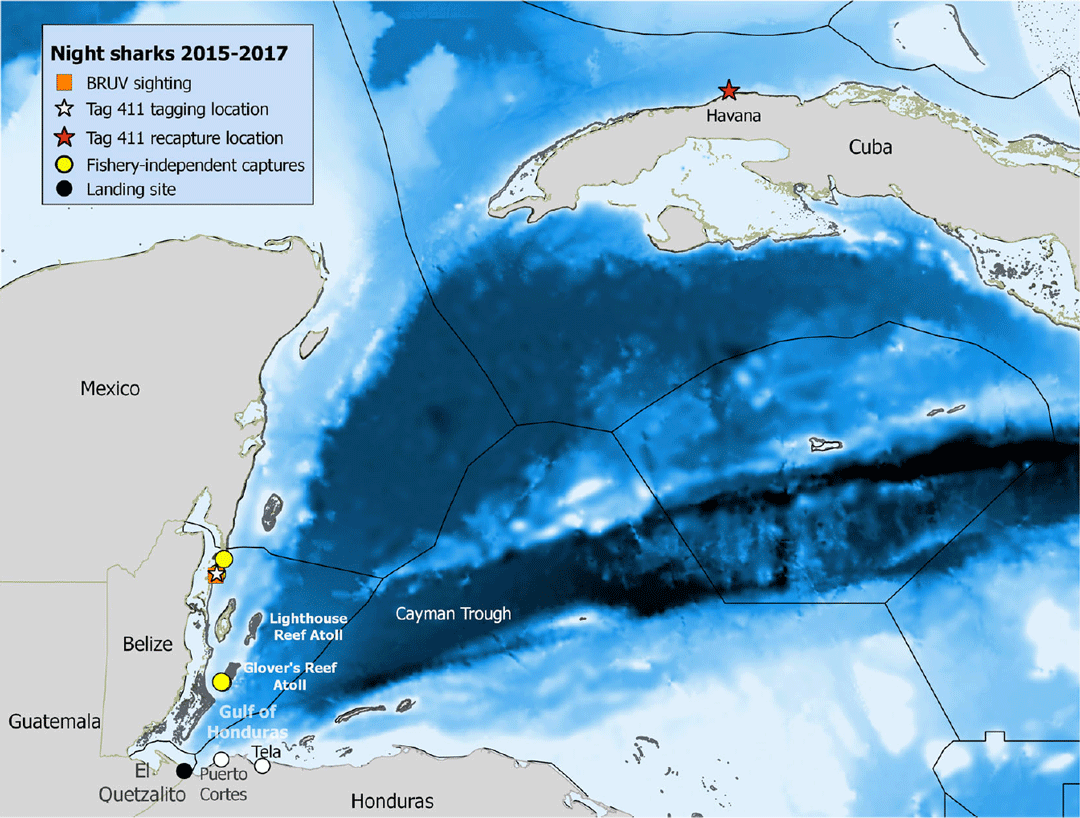Night(shark) Moves
Ivy Baremore and her team of co-authors have tracked night sharks (Carcharhinus signatus) in the western Caribbean, where little was known about their movement patterns. Understanding where, and how, these sharks move, is critical information to help scientists better manage night shark populations. The study, published in the journal Environmental Biology of Fishes, records the first evidence that night sharks might travel long distances. A young male, tagged in northern Belize, was recaptured 60 days later off the coast of Havana, Cuba.
Their other results suggest that adult night sharks can be found in the western Caribbean from March through to November. Young night sharks are likely part of the catch for artisanal fisheries in the Guatemalan Caribbean, and Glover’s Reef Atoll in Belize appears to be an important night shark hotspot, attracting an aggregation of these sharks to its reaches – possibly to mate – in summer.

Illustration © MarAlliance
So why worry about the night shark? This semi-oceanic, deep water species was once common in Cuban waters but has been increasingly underreported in the western Caribbean. John Carlson and his team have documented these sharks in the western Atlantic Ocean, from Delaware (USA) to southern Brazil, where their US populations have been reportedly stabilising. However, night sharks are listed by the IUCN Red List as Vulnerable to extinction, most likely because they are targeted by fisheries on Brazilian seamounts, and underwent past population declines in US and Cuban waters. Outside the US and Brazil, we still know very little about night sharks: what the status of their populations is, and where they tend to move about.
Ivy and her colleagues used a combination of longline fishing surveys and baited remote underwater video system (BRUVs) surveys to track these sharks between Belize, Guatemala, Honduras and Cuba. Their findings help better inform management strategies which, the researchers say, should be regional in their approach. Some of the suggestions proposed in the paper include a time-area closure for Glover’s Reef Atoll during July – August. That is, closing the area to fishing for a defined period (and in this case, to work in connection with the seasonal shark closure in Belize, which happens every year from September – October). The authors also suggest that continued monitoring of the fisheries landing sites in Guatemala might help piece together what the scale of the shark fishery is, and where it might be headed in terms of its impact.

Capture locations and landing sites for night sharks in Belize, Guatemala, and Cuba 2015-2017. Shading represents increasing depth from light blue to dark blue and black lines delineate Economic Exclusive Zones (EEZ). Illustration © MarAlliance
The western Caribbean is, it seems, an exciting place to be studying deep-water sharks. The deepest trench in the region brings to light new discoveries each year, and Ivy and her team expect that we’ll learn much more in the near future about how sharks are moving and migrating in these deep oceans!
You can read the paper here.
**Reference: Baremore, I.E., Polanco-Vásquez, F., Hacohen-Domené, A., Castellanos, D.W. and Graham, R.T., 2019. Short-term movement of a night shark (Carcharhinus signatus) in the western Caribbean with notes on the species’ distribution and threats in the region. Environmental Biology of Fishes, pp.1-8.
